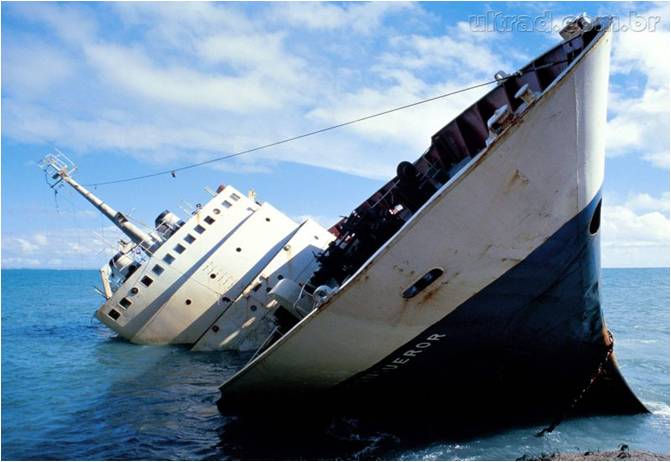The ship’s balance...
- Bate-papo com Netuno

- 16 de out. de 2015
- 3 min de leitura
Edited by Katyanne M. Shoemaker
Have you ever asked how ships are balanced at sea? Or how it can carry people and merchandise without tipping over? It is easy to imagine that there is an ideal maximum weight, designed and calculated by engineers, that the ship can support without sinking. OK. But how does how can this keep its balance when it is empty?
The answer is easy: it needs to add weight when it is empty and then release the weight while loading it with people or merchandise.
In the beginning, there were several attempts with stones and pieces of wood, but due to the effort required to add and remove these materials, a better thought was to use the seawater! Pumps could be used to pull in and throw out the water when ship was docked. This method is the method we still use today; ships have a ballast tank, which can hold ballast water that is pumped in and released.

That is where my story begins!
Imagine an empty ship going from China to Brazil, where it will be loaded with merchandise. As already explained, the ship would have to pump water from the Chinese coast to keep balance while traveling.
The water pumped in however, is not pure and has a lot of organisms that who are trapped inside the ballast tank. You might be asking: isn’t there a mesh filter that can be used to avoid trapping these organisms? Yes, but it’s not efficient, especially for microorganisms.
A second problem is, according to International Maritime Organization (IMO), ships are to exchange water in the open sea, because there are different physical and biological conditions in port that the organisms from the open ocean cannot survive. However, this does not happen. Aside from many ships not changing water at sea, there are several organisms that can resist both the travel and different environmental conditions.
When arriving at the destination port, these non-native organisms are discharged along with the ballast water, causing serious problems for the local fauna and flora, as well as public health. Can you imagine the environmental impact?
Because of this, there are many countries that belong to IMO doing research to solve this problem. One of these solutions is the treatment of the ballast water inside of the tank. There are many treatment proposals: mechanic, physical, and chemical. These are currently either in testing, generate waste, or are not completely efficient.
I did work with phytoplankton, marine microalgae explained here. These microscopic organisms can be resistant to many treatments, and some species are toxic to animals. In fact, red tide is caused by a microalgae group.
My challenge was then, to find ways to eradicate these microscopic algae from the ship ballast water. I tested three treatments: exposure to UV, ozone, and Peraclean, a chemical with characteristics similar to hydrogen peroxide. As I developed this project, I knew that these treatments were of huge importance and needed further studies done.
The most interesting stage of this project was the partnership with the company Brasil Ozonio (a company that works with the University of São Paulo). Don’t be afraid to make university-industry partnerships; much of our knowledge doesn’t go forward because the researchers don’t want to expose their work and ideas. This partnership was essential to my work.

The most interesting stage of this project was the partnership with the company Brasil Ozonio (a company that works with the University of São Paulo). Don’t be afraid to make university-industry partnerships; much of our knowledge doesn’t go forward because the researchers don’t want to expose their work and ideas. This partnership was essential to my work.
After conducting a series of experiments, my best result was with the ozone! I was able to eradicate even the most resistant microalgae (the dinoflagellates), which no other treatment had managed to kill. In addition to being effective, this treatment doesn’t generate waste into the treated water, so it may be safely discharged overboard.
In future posts, I will discuss my results in more detail, but if you want to know a little more about it, follow the links about my dissertation:
See you!





Comentários